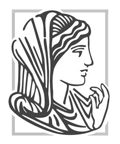|
Level: Type: |
Undergraduate (A-) |
 |
| Instructors: Menelaos Theoxaris, Dimitrios Kateris | |
| Department: Agricultural Technology | |
| Institution: TEI of Epirus | |
| Subject: Other Agricultural Sciences | |
| Rights: CC - Attribution-NonCommercial-NoDerivatives |